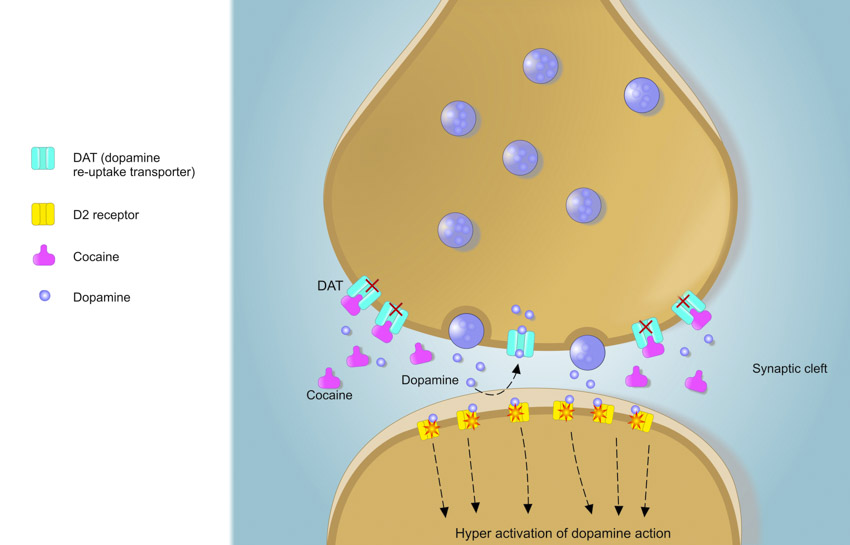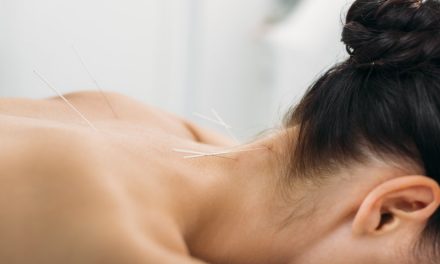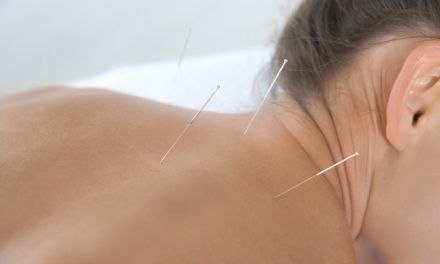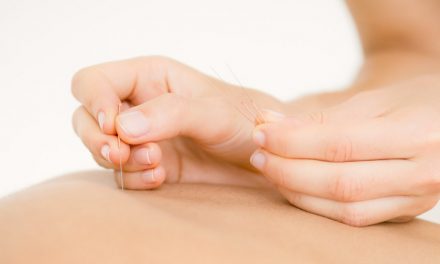Acupuncture regulates cocaine seeking behavior. University researchers document that acupuncture suppresses addictive behavioral and neurochemical changes caused by cocaine intake. In a controlled laboratory experiment, researchers have documented a specific acupuncture point that blocks deleterious cocaine induced changes. Specifically, application of acupoint HT7 (Shenmen) suppresses cocaine’s stimulation of increases “in locomotor activity and the expression of pCREB and c-Fos in the NAc.” [1]
The nucleus accumbens (NAc) is an area of the brain active in motivation and reward. This reward circuit has dopaminergic terminals extending from the ventral tegmental area (VTA) of the brain to the NAc. Regulation of c-Fos and pCreb (phosphorylated cAMP-response element binding protein) are active in the circuitry. Drugs, including cocaine, increase levels of c-Fos and pCREB. Acupuncture applied to HT7 downregulates overexpression of cFos and pCREB in the NAc caused by cocaine intake.
The researchers determined that decreases of both pCREB and c-Fos in the NAc and cocaine induced behavioral activities are directly proportional to the depth of needling at HT7. Superficial needling was not as effective as deep needling. The research team posits that HT7 needling may exert its therapeutic actions by stimulating ulnar nerve A-fibers. Conceptually, they suggest that deeper needling recruits more A-fibers and therefore creates a greater peripheral sensory signal to the brain.
Cocaine intake increases dopamine (DA) levels in the NAc. The researchers find that only needling of HT7, and not control points, reduces overexpression extracellular dopamine levels in the NAc caused by cocaine intake. The researchers point out another intriguing topic. They discovered evidence indicating that acupuncture reduces cocaine seeking behavior by counteracting long-term potentiation in VTA dopaminergic neurons caused by repeated cocaine intake.
Long-term potentiation is a process wherein there are signal increases between synaptic neurons caused by repeated activities. This process is active in memory, learning, and also addiction. Long-term potentiation in NAc and VTA synapses is active in cocaine addiction related behaviors. The research indicates that the regulatory effects of needling HT7 on DA levels in the NAc counteract the long-term potentiation effects of cocaine intake. The researchers note, “our results showed that HT7 stimulation significantly reduced cocaine priming-induced reinstatement. Also, our previous findings have shown that HT7 acupuncture suppressed stress-induced relapse to cocaine-seeking behavior and neuronal activation in the NAc shell.” [2] This is groundbreaking research; naturally, we look forward to more follow-up investigations to confirm these findings concerning long-term potentiation.
The researchers note that HT7 may reduce cocaine addiction by increasing GABA levels in the ventral tegmental area of the brain. Needling HT7 increases both GABA levels and firing rates in the ventral tegmental area. The researchers posit that the GABA increase causes a decrease in the activity of dopaminergic neurons in the ventral tegmental area and NAc, thereby causing a “reduction of relapse to cocaine-seeking behavior.” [3] The researchers conclude that “acupuncture at HT7 effectively reduces cocaine-primed reinstatement and cocaine suppression of GABA neuron activity and NAc DA release. Our results suggest that acupuncture may attenuate cocaine-seeking behavior by regulating DA neurons via activation of neurons in the VTA.” [4]
Important Points
The data shows that acupuncture reverses the inhibition of GABA release in the ventral tegmental area of the brain caused by cocaine intake. The effect was active when needling HT7, but not when needling LI5 (Yangxi). This indicates point specificity relative to the effects of acupuncture’s effective actions on the brain.
Needling HT7 to 1 mm did not produce the same level of effective actions as needling to a 3 mm depth. Cocaine increases pCREB and c-Fos expression in the NAc area of the brain. Needling HT7 to 1 mm decreases this effect but the 3 mm depth produced significantly greater results. The data indicates a depth dependent response to acupuncture.
Electroacupuncture to bilateral HT7 for a total of five minutes increases the rate of firing for ventral tegmental area GABA neurons. Cocaine intake decreases the firing rate; however, electroacupuncture reversed this effect. The researchers note that “electro-acupuncture significantly reduced cocaine inhibition of VTA GABA neuron firing rate.” [5]
Cocaine increases dopamine release in the NAc. Repeated intake increases this effect. Acupuncture applied to HT7, and not at PC6 (Neiguan), significantly reversed this effect by decreasing the excessive dopamine levels caused by cocaine intake. This indicates point specificity for this effect.
Acupuncture needling to HT7, but not to LI5 (Yangxi), reduced cocaine seeking behavior. This did not affect behavior toward food intake, only toward cocaine use. A blocking agent tested the pathways of effective action. The researchers determined “acupuncture attenuated cocaine-primed reinstatement of cocaine seeking through activation of GABA neurons in the VTA.” [6]
Objective Results
Documentation of results was confirmed with several instruments. Locomotor activity was monitored with a video tracking system. Microdialysis confirmed results in the VTA and NAc. Immunohistochemistry confirmed pCREB and c-Fos results. Liquid chromatography measured GABA and dopamine levels. Neuron activity was documented using electrophysiological recordings.
Summary
According to the National Institute on Drug Abuse (NIH, USA), cocaine is responsible for approximately 6 percent of all drug abuse treatments. Among users, approximately 68% seeking treatment smoke crack. There are no specific U.S. Food and Drug Administration (FDA) approved drugs for the treatment of cocaine addiction at this time, although many drugs are being tested. The National Institute on Drug Abuse documentation notes that “Researchers are currently testing medications that act at the dopamine D3 receptor, a subtype of dopamine receptor that is abundant in the emotion and reward centers of the brain. Other research is testing compounds (e.g., N-acetylcysteine) that restore the balance between excitatory (glutamate) and inhibitory (GABA) neurotransmission, which is disrupted by long-term cocaine use.” [7]
The current research on needling acupoint HT7 indicates its therapeutic actions are active in GABA neurotransmission and dopamine release. This pathway of effective action is consistent with scientific inquiries into the development of cocaine abuse treatments. The research does not indicate that acupuncture is a cure, but it does indicate that acupuncture is a helpful treatment modality in reversing cocaine addiction.
Notes
[1] Jin, Wyju, Min Sun Kim, Eun Young Jang, Jun Yeon Lee, Jin Gyeom Lee, Hong Yu Kim, Seong Shoon Yoon et al. “Acupuncture reduces relapse to cocaine‐seeking behavior via activation of GABA neurons in the ventral tegmental area.” Addiction biology 23, no. 1 (2018): 165-181.
Research Team:
Daegu Haany University (Daegu, South Korea)
Brigham Young University (Provo, Utah)
Uniformed Services University of the Health Sciences (Bethesda, Maryland)
Wonkwang University (Iksan, South Korea)
Korea Institute of Oriental Medicine (Daejeon, South Korea)
[2] Yoon SS, Yang EJ, Lee BH, Jang EY, Kim HY, Choi SM, Steffensen SC, Yang CH (2012) Effects of acupuncture on stress-induced relapse to cocaine-seeking in rats. Psychopharmacology (Berl).
[3] Jin, Wyju, Min Sun Kim, Eun Young Jang, Jun Yeon Lee, Jin Gyeom Lee, Hong Yu Kim, Seong Shoon Yoon et al. “Acupuncture reduces relapse to cocaine‐seeking behavior via activation of GABA neurons in the ventral tegmental area.” Addiction biology 23, no. 1 (2018): 165-181.
[4] Ibid.
[5] Ibid.
[6] Ibid.
[7] drugabuse.gov/publications/research-reports/cocaine/what-treatments-are-effective-cocaine-abusers






Recent Comments